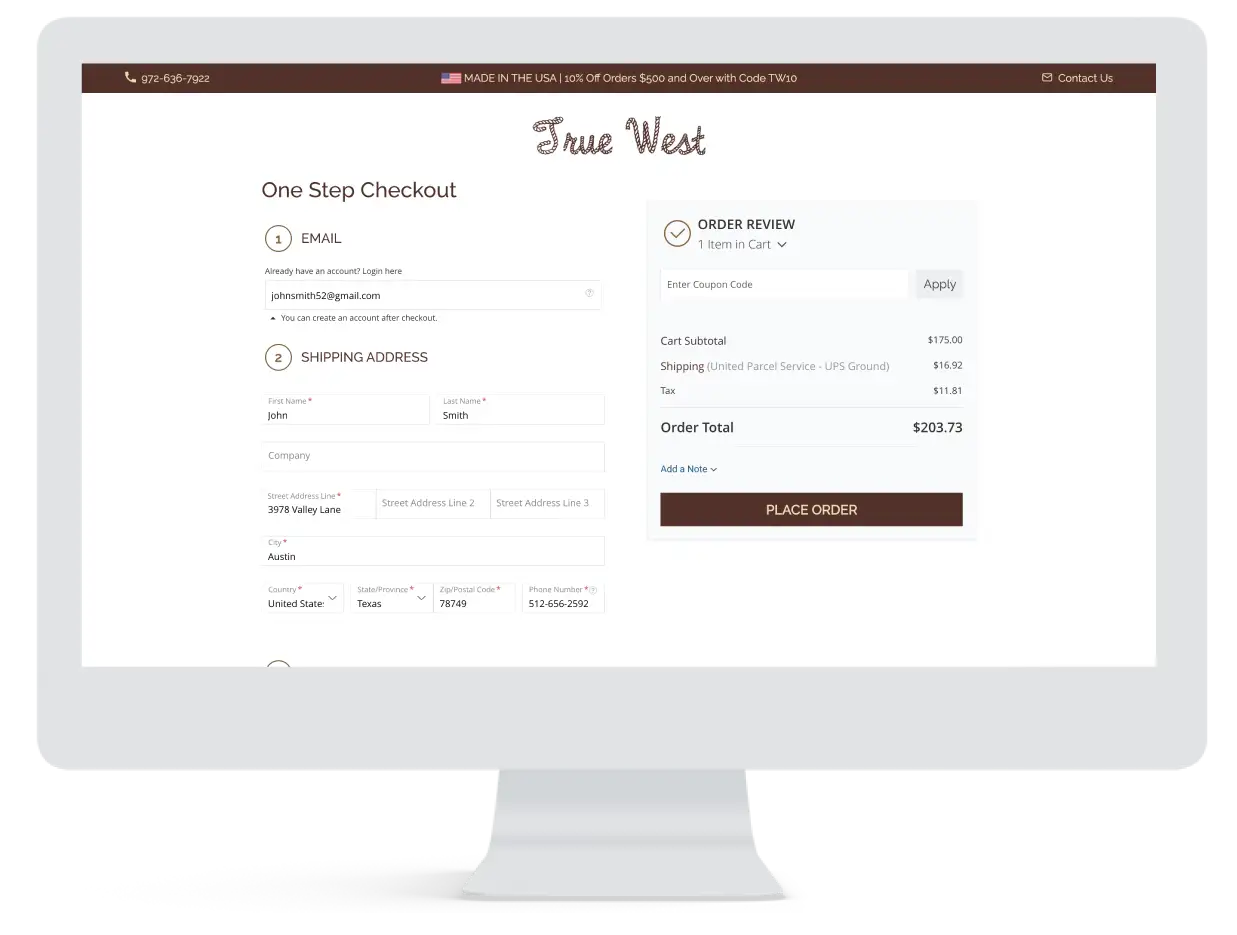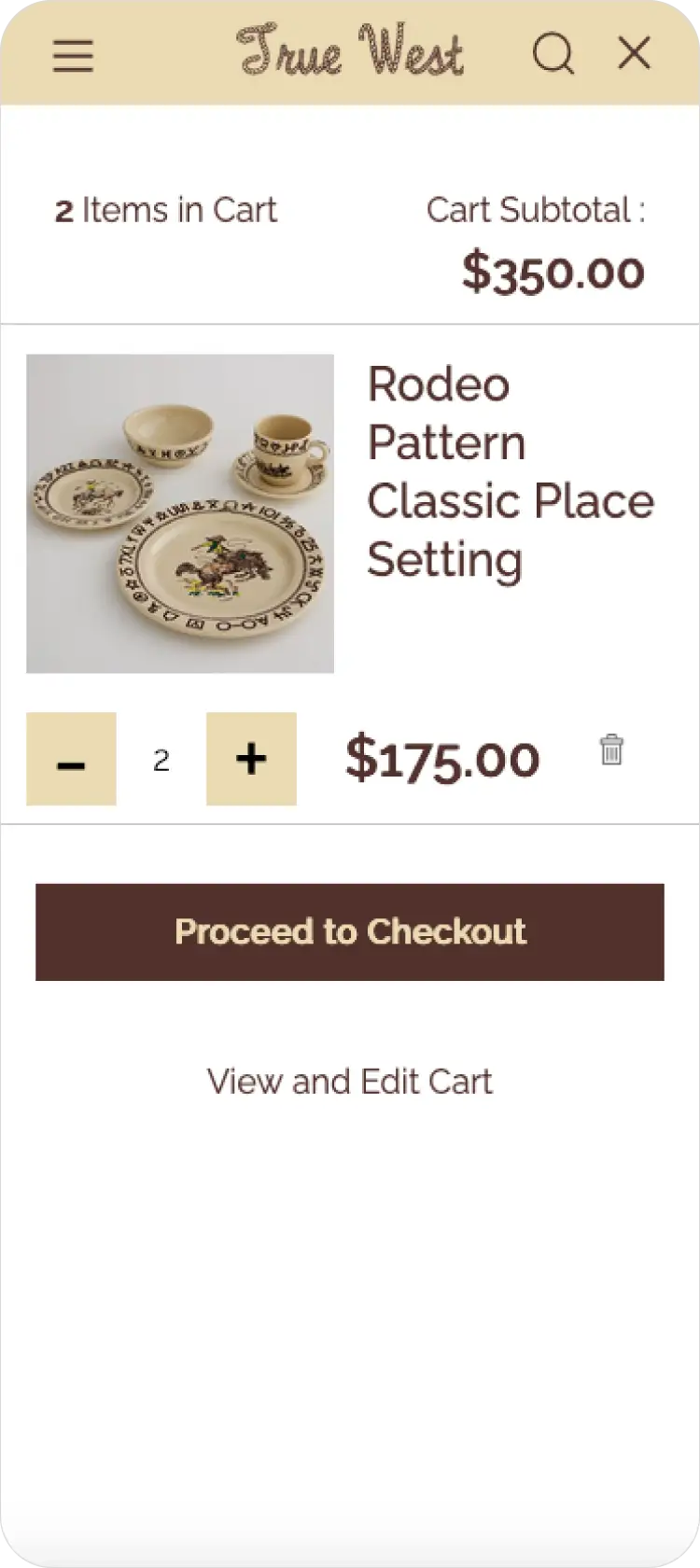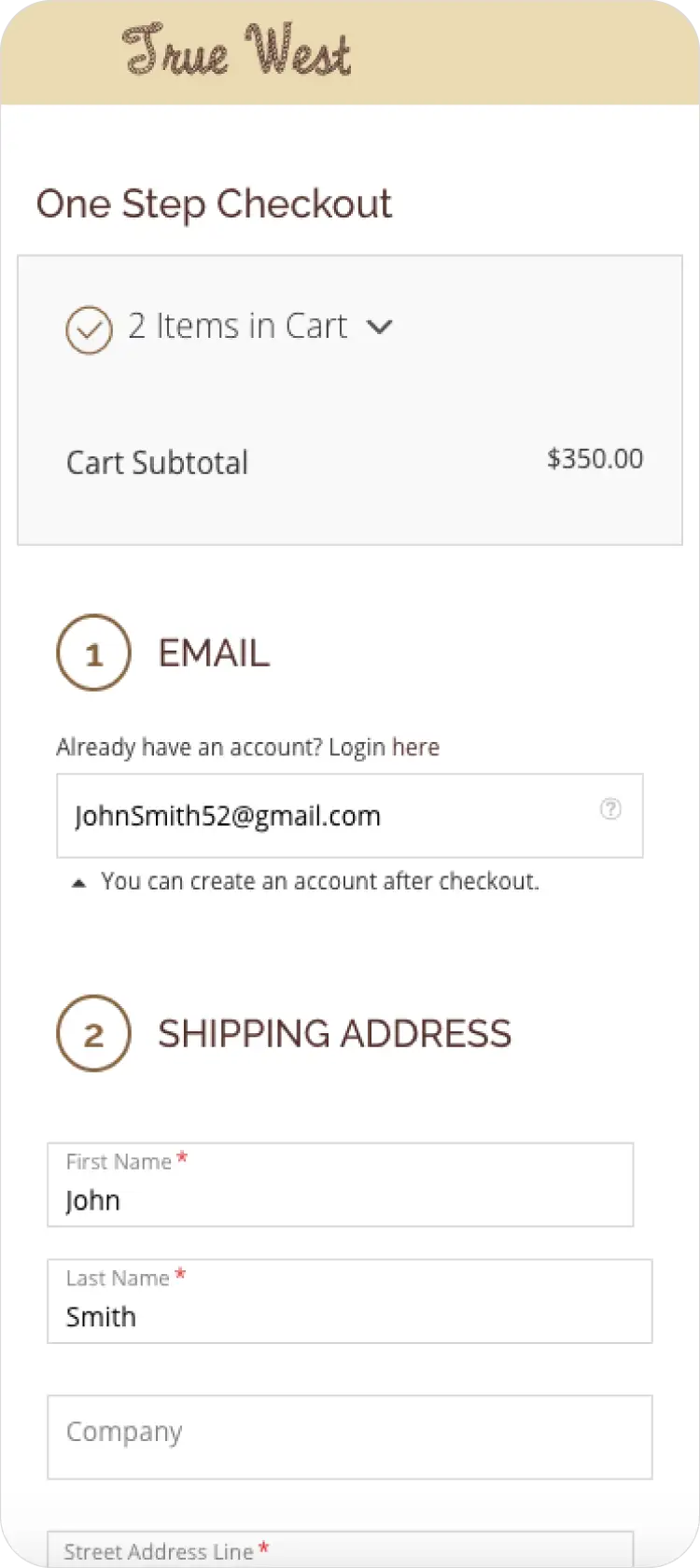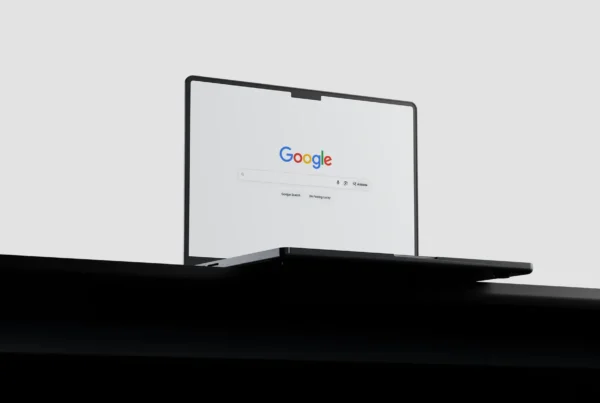
Standing out in today’s crowded digital landscape is challenging, to say the least. Getting customers to your website is a big win, but the ultimate goal is securing a purchase or other specific action, i.e., conversions. After all, conversions are revenue drivers. Fortunately, there’s a roadmap for eCommerce conversion optimization, including actionable strategies that influence on-site behavior, boost conversions, and, ultimately, increase the bottom line.
In today’s article, we cover everything you need to know about optimizing your site for customer-motivated performance. We’ll start by defining conversion rate optimization before diving into eCommerce conversion optimization do’s, don’ts, best practices, and more.
What is eCommerce Conversion Optimization?
Conversion rate optimization (CRO) for eCommerce focuses on boosting the proportion of website visitors who take a desired action, like purchasing. CRO is instrumental in driving more conversions, a goal driven by enhancing aspects of the site, such as design, user experience, and marketing strategies. For example, if your website has a high bounce rate or low time spent on site, there may be issues with your site design or landing page content. Identifying this problem and implementing solutions can significantly improve the user experience, driving more cart adds and checkouts.
Is conversion rate optimization measurable? Absolutely. However, CRO focuses on percentages, not volume. You are measuring the proportion of people who take key actions, like adding an item to their cart and completing checkout, rather than the number of visitors. Here’s a formula for calculating conversion ratios:
[number of transactions] ÷ [number of visitors or sessions] x 100 = CVR
So, if your eCommerce site has 20 visitors and 3 purchases, the conversion ratio is 15%.
Key Metrics for Measuring Conversion Success
Several key indicators offer insight into eCommerce conversion optimization success, specifically bounce rates, average session durations, and cart abandonment rates. These indicators provide invaluable insight into users’ ability to find what they want and execute an action. For example, longer session durations generally suggest visitors find the content or products valuable. If users leave quickly, it may signal navigation difficulties, a lack of engaging content, or friction in the purchase process.
By monitoring these key metrics, businesses can measure engagement levels with content and products, identify friction points during the customer journey, and determine data-driven optimization strategies to enhance user experiences and drive more conversions.
Top Strategies for Boosting eCommerce Conversions
Personalized Shopping Experiences
These days, a personalized user experience isn’t as much a nice-to-have feature as an expectation. Leveraging user data for tailored recommendations helps persuade users to purchase by showcasing items that align with their interests, past purchases, and browsing behavior. By showcasing products that match their preferences, personalized shopping experiences can help keep users browsing longer and improve conversion rates.
A few tools and strategies can boost conversion rate optimization through personalized shopping experiences. These include AI-powered recommendations, dynamic content and messaging based on user behavior and customer preferences, customized email marketing, and loyalty programs and rewards.
Optimizing Product Pages
Product pages are pivotal in conversion rate optimization, as they provide essential details that encourage purchasing. High-quality product pages optimized for conversion should include high-resolution images (or videos) with zoom functionality, compelling and concise product descriptions that favor benefits over features, and clear, actionable calls to action (or CTAs, like Add to Cart or Buy Now) above the fold. Social proof and trust signals like customer reviews and ratings also help build credibility and authenticity.
Simplifying the Checkout Process
A complicated checkout process can be frustrating – quickly driving users off-site to find their solution elsewhere. Therefore, making the process seamless is essential in eCommerce conversion optimization. Some strategies for achieving frictionless checkout include offering guest checkout, minimizing form fields, and providing multiple payment options.

Leveraging Technology for Conversion Optimization
In today’s eCommerce landscape, leveraging technology provides a competitive edge by intuitively streamlining processes and personalizing experiences. Technology can also help reveal user pain points that prevent conversions, providing invaluable eCommerce conversion optimization opportunities.
AI-Powered Solutions for CRO
We’ve already touched on AI, but let’s dive deeper into how AI conversion rate optimization tools can transform online buying experiences by propelling conversions. Technologies like chatbots, dynamic pricing, and predictive analytics enhance user experiences by providing real-time solutions and recommendations tailored to each user. For example, AI-powered chatbots can give quick answers during a customer’s visit, while dynamic pricing offers a competitive edge with real-time price adjustments based on AI-analyzed competitive pricing, demand, and user behavior.
Using Heatmaps and User Behavior Analytics
Heatmaps and user behavior analytics can provide invaluable visual insights into user interactions to pinpoint friction points and improvement opportunities. Essentially, heatmaps show (i.e., give a visual representation or “map”) user activity on webpages by tracking clicks, scrolling behavior, and cursor movements to help identify which areas get the most engagement, where users drop, and which CTAs are effectively positioned. This data provides deeper insights into real-time user behavior to expose pain points, navigation issues, and cart abandonments. These conversion rate optimization tools are essential drivers for revealing data-driven improvement opportunities, and popular solutions include Hotjar, Crazy Egg, and Microsoft Clarity.
A/B Testing for Continuous Improvement
A/B testing is another powerful tool for conversion rate optimization. It examines the effectiveness of on-page elements like CTAs, headlines, and product layouts to optimize their performance. Conducting A/B testing offers quantifiable insights into what works best for users, helping to enhance their engagement, reduce bounce rates, and boost checkout completion. Popular A/B testing tools include Google Optimize, Optimizely, VWO (Visual Website Optimizer), and Convert.
Best Practices for B2B eCommerce Conversion
B2B conversion rate optimization strategies differ slightly from B2C strategies. Unlike impulse or necessity-driven B2C purchases, B2B buyers prioritize efficiency, detailed information, and seamless workflows.
Tailored Solutions for Business Buyers
B2B buyers expect a tailored shopping experience that aligns with their business needs. Strategies that align with these expectations include offering personalized pricing and bulk discounts. For example, long-term contracts or account status may afford special pricing to ensure customer loyalty. Product and service details are also paramount to friction-free purchasing in B2B shopping, so providing detailed product specifications is paramount to optimizing purchase conversions.
Streamlining Lead Capture
B2B eCommerce often requires more relationship building to secure purchases, so optimizing and streamlining lead capture and on-site handling can help ensure potential buyers are moved smoothly through the buying process. Some helpful tools that facilitate this process include implementing optimized and simplified inquiry or lead capture forms, creating compelling, benefits-focused landing pages, and providing live or AI chatbots.
Common Pitfalls in eCommerce Conversion Optimization
So far, we’ve offered some tactical content and user-related optimization strategies for conversion rate optimization. Now, let’s focus on common conversion pitfalls, as these can be easy fixes and quick wins for CRO. First, make site speed a priority. Nothing frustrates customers more than slow-loading websites. Also, ensure your eCommerce site is mobile responsive. Although desktops play a critical role in purchase conversions, smartphones accounted for 75% of retail website visits in the third quarter of 2024, generating approximately 66% of online shopping orders1. Finally, don’t forget to incorporate trust signals, where applicable, like secure payment badges, throughout the website. These elements reassure visitors of the website’s legitimacy, security, and reliability – increasing confidence and encouraging conversions.



Future Trends in Conversion Optimization
As technology advances, emerging trends designed to create more engaging and seamless online shopping experiences will shape the future of eCommerce conversion optimization. Following are a couple of trends businesses are already beginning to explore and adapt to stay ahead of the curve.
Voice Search and Conversational Commerce
Voice assistants are becoming key players in eCommerce, including popular options like Siri, Alexa, and Google Assistant. Optimizing online stores for voice search and conversational commerce will be a key strategy for staying competitive and increasing CRO. Voice search optimization includes incorporating natural language keywords, FAQs, and structured data markup to improve visibility in voice search results. Conversational commerce optimization empowers voice-activated website interaction, allowing customers to re-order, check delivery status, and receive personalized shopping suggestions through their voice assistants.
The Rise of Augmented Reality in Shopping
Augmented reality bridges the gap between digital and physical shopping experiences, allowing customers to interact with products virtually from anywhere. For example, Ikea Place uses AR to let users visualize furniture in their spaces, enhancing purchase conversions and reducing returns. Other examples of AR in eCommerce include virtual try-ons for clothing and accessories and interactive shopping experiences designed to let customers explore products from every angle, zoom in on details, and customize options before buying.
Improve CRO with eCommerce Experts
Gaining a competitive edge in eCommerce involves holistically addressing user experiences, on-page and technical SEO, optimized content, and more to support conversion rate optimization. At Living Proof Creative, our team specializes in data-driven strategies that enhance user engagement, streamline the buying journey, and maximize conversions. Whether you need eCommerce platform migration, UX improvements, or digital marketing solutions, we’re here to help you unlock your store’s full potential.
Contact Living Proof Creative today to optimize your eCommerce site for higher conversions and sustainable growth!
FAQs
What is e-commerce optimization?
This involves improving website performance, UX, and marketing strategies to increase conversions and sales.
What is the formula for eCommerce conversion?
[number of transactions] ÷ [number of visitors or sessions] x 100 = CVR
What is the first stage of an effective eCommerce conversion rate optimization process?
The first stage is to conduct an eCommerce conversion rate optimization audit to identify areas for conversion improvements. As conversion rate optimization experts, we are happy to help. Contact us to get started.
What affects eCommerce conversion rate?
Various factors affect conversion rates, including website speed, UX, trust signals, pricing, product descriptions, and the checkout process.
What does optimize conversion mean?
It means enhancing website elements to increase the percentage of visitors who complete a desired action.
How do you increase customer conversion rate?
eCommerce sites can boost conversion rate optimization by improving UX, streamlining checkout, adding trust signals, using high-quality visuals, and personalizing offers.
Can user experience increase conversion?
Yes, a seamless, intuitive UX reduces friction and boosts conversions.
What is conversion optimization in digital marketing?
Conversion optimization in digital marketing involves refining DM campaigns, website landing pages, and on-site user journeys to maximize lead generation and sales.
What is a healthy eCommerce conversion rate?
Typically 2-3%, but it varies by industry and target audience.
How do you drive conversions in eCommerce?
Incorporate compelling CTAs, A/B testing, personalization, retargeting, and optimized product pages to help drive eCommerce conversions.
How do you increase conversion rate in eCommerce?
eCommerce conversion optimization can be achieved by optimizing site speed, improving mobile experiences, enhancing user trust, simplifying navigation and checkout, and optimizing product or service content.
What is conversion in eCommerce?
A conversion occurs when a website visitor completes a desired action, such as making a purchase, signing up for a newsletter, or downloading a lead magnet.





